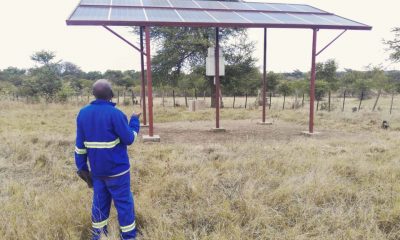BY BHEKIMPILO WEZA
Lupinyo stormed into the champions league final Football League Cup on Saturday after cruising past Masters in a thrilling semi- final played at Lupinyo Stadium.
The Vusa Nyoni coached side had to dig deep and boot Masters who had come from a two goal down to level matters in a tightly contested semi final.
They took the lead as early as the sixth minute when Masters defense failed to communicate and let in a harmless ball to pass between them for Brightman Dube to score the opener.
Five minutes later, Lupinyo went further ahead after the defender Welcome Ncube failed to clear the ball allowing Tyrol Ncube to whisk it away from him.
In a bid to shoot, the young striker was hacked down from behind and the referee Nguquko Mpofu did not hesitate to point to the spot.
Ncube stepped up and buried home for Lupinyo’ second, sending the stadium into raptures.
The goal brought more urgency to the Masters side who started pushing hard with Farai Mapfumo dictating the pace in the middle.
As the pressure mounted, the Masters coach brought in Mbekezeli Moyo for Themba Moyo and this paid off as Masters scored in the twenty fourth minute.
Moments after, Lupinyo captain Acculate Mudimba misjudged a cross from the left and allowed Mtshumayeli Moyo to tap in for Masters .
The goal looked like what Masters needed for inspiration,and they did that with an equalizer thirty four minutes into the match .
Kelvin Ndebele got to the end of Moreblessing Mpofus cross and took a stunner that went across the goalkeeper for the equalizer.
The equalizer by Masters seemed to have slowed things a bit as the two sides started to be cautious going forward.
Sensing the danger of going into a penalty shootout, Lupinyo head coach Vusa Nyoni brought in Terrence Ncube to add firepower upfront, and Lupinyo started causing more problems to the visitors defense with man of the match Brightman Dube a menace on the left side of the field.
Lupinyo could have scored a goal ten minutes before time but Ncube missed his effort after being set up by Dube.
When everyone thought the match was headed for penalties, there was a moment of thrill when Masters defenders were caught in sixes and sevens at the back in a bid to clear, but Ncube hit the back of Terrence Ncube and the ball went straight into the net to bring the stadium into a halt.
When the referee blew the whistle, it was now a moment of celebration for the home side, according to coach Nyoni.
“l was delighted and congratulations to my boys,” Nyoni said.
“They deserved a win because we worked hard for this from day one.”
Lupinyo, affectionately known as the Bullets, will now meet Indlovu lyanyathela who shook everyone by beating Dragons three zero in a second semi final on Sunday.
After a goalless ninety, it was all left for the penalty to decide who goes to the final to meet Lupinyo.
Cornwell Ncube,Mqabuko Ndlovu and Clayton Moyo missed the first three spot kicks for Dragons, before Teyiho Mwembe, Adrian Mathe and goalkeeper Recardo Ncube scored for lndlovu to set a final
Dragons will face Masters in a third place playoff on the same day before the finals.


 Slider3 years ago
Slider3 years ago
 National4 years ago
National4 years ago
 Tourism and Environment4 years ago
Tourism and Environment4 years ago
 Opinion4 years ago
Opinion4 years ago
 Special reports4 years ago
Special reports4 years ago
 National4 years ago
National4 years ago
 National3 years ago
National3 years ago
 National3 years ago
National3 years ago


